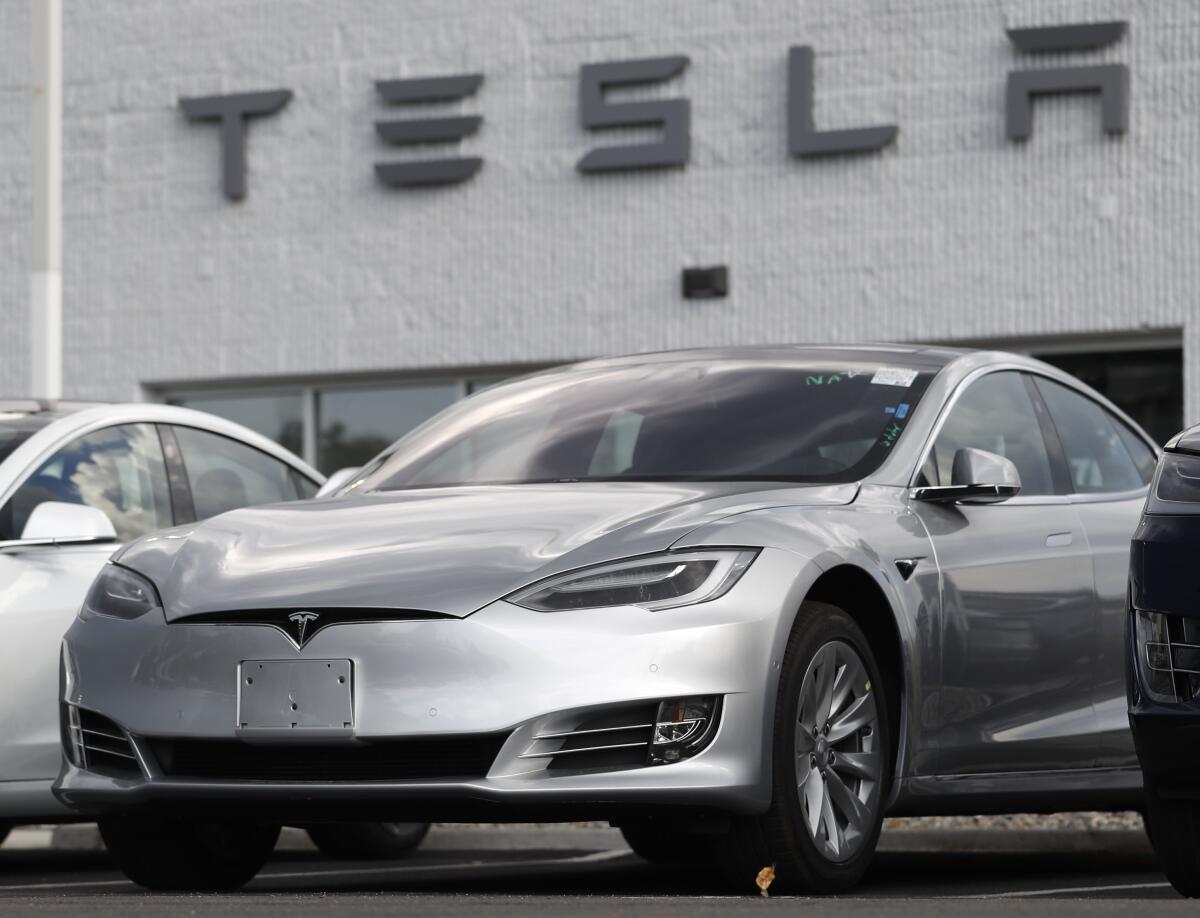Tesla Autopilot scrutiny grows as federal inquiry gets upgraded

- Share via
U.S. authorities have expanded an investigation into Tesla’s Autopilot system after about a dozen collisions at crash scenes involving first-responder vehicles, the latest sign that regulators are stepping up scrutiny of the automated driving features.
The investigation, initially announced by the National Highway Traffic Safety Administration in August, was widened to cover an estimated 830,000 Tesla Model Y, X, S and 3 vehicles from the 2014 model year onward. The regulator, which has the power to deem cars defective and order recalls, said the vehicles now under investigation have been involved in 14 crashes that resulted in 15 injuries and one fatality.
The inquiry was also converted from a preliminary investigation to an engineering analysis, according to documents posted Thursday on the NHTSA website. The agency says the move will allow it to “extend the existing crash analysis” and take other steps to determine the extent to which Tesla’s technology “may exacerbate human factors or behavioral safety risks by undermining the effectiveness of the driver’s supervision.”
The top federal traffic safety regulator says Tesla’s partially automated driving system, Autopilot, failed to spot parked police cars and fire trucks. It wants to know why.
Tesla didn’t respond to a request for comment. Its shares fell 0.9% on Thursday. The stock was down 31% this year through Wednesday’s close.
In a statement, NHTSA addressed a common misconception over automated driving systems, often referred to as self-driving, saying that “no commercially available motor vehicles today are capable of driving themselves.”
In the documents posted Thursday, the agency cited “foreseeable misuse” of Autopilot as a factor in its decision to expand the inquiry.
“A driver’s use or misuse of vehicle components, or operation of a vehicle in an unintended manner does not necessarily preclude a system defect,” the agency wrote. “This is particularly the case if the driver behavior in question is foreseeable in light of the system’s design or operation.”
While regulators investigate a spate of Teslas steering themselves into parked vehicles, Tesla owners have been reporting faulty collision-avoidance systems.
Tesla is facing increased federal scrutiny on multiple fronts. Last week, NHTSA announced it’s investigating 758 complaints of Tesla cars that suddenly brake at high speeds, part of an inquiry launched in February into the so-called “phantom braking” phenomenon. No crashes or injuries stemming from the braking issue have been reported.
Tesla has marketed driver-assistance features using the names Autopilot and Full Self-Driving that still require drivers to keep their hands on the wheel. The company has drawn criticism from the likes of the National Transportation Safety Board, former NHTSA leaders and members of Congress over issues including how it has branded the systems and whether it does enough to safeguard against inattentiveness and misuse.
Safety advocates in Washington cheered NHTSA’s move to expand the inquiry into the company’s Autopilot system Thursday.
“NHTSA appears to be increasingly closer to taking firm action against Tesla, which will hopefully be strong enough to permanently dissuade the company from continuing to mislead the public about the capabilities of its vehicles,” Michael Brooks, acting executive director and chief counsel of the Center for Auto Safety, said via email.
Bloomberg writer Dana Hull contributed to this report.







